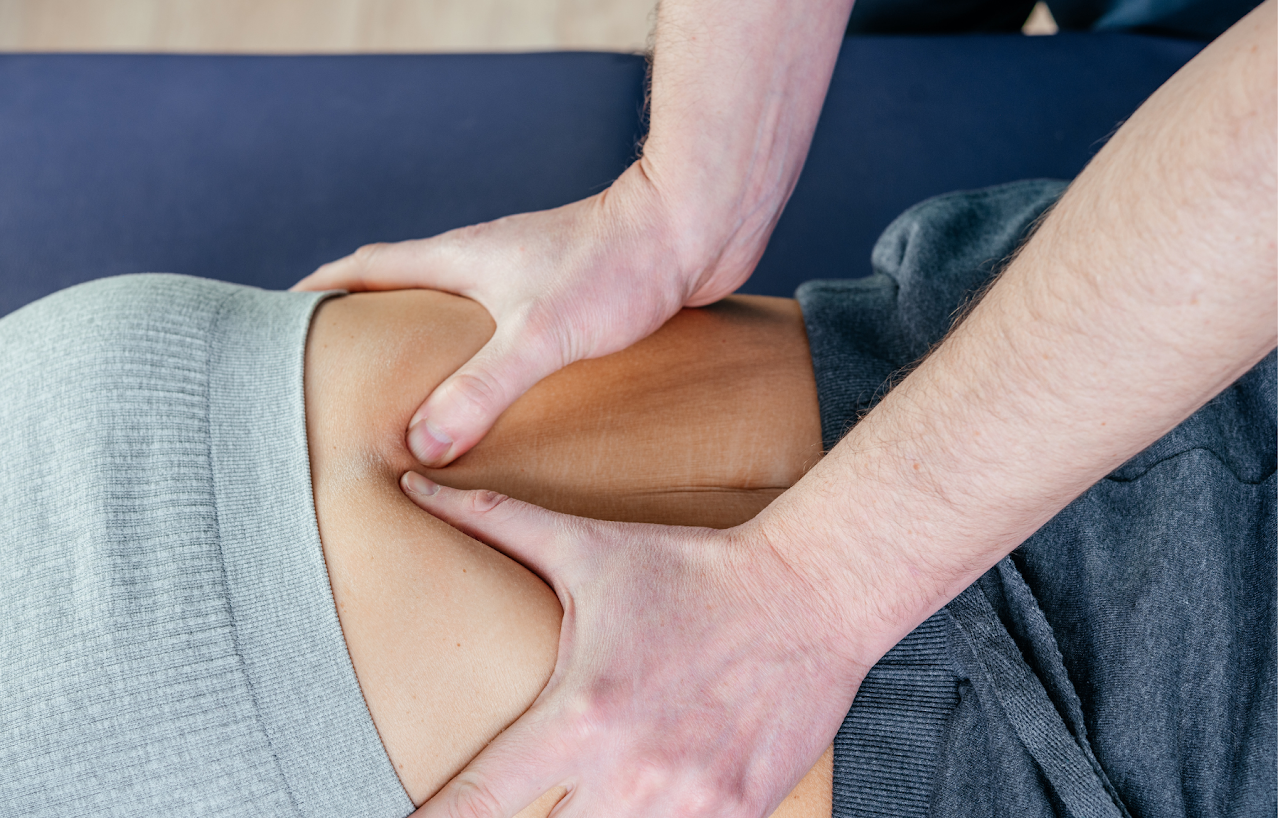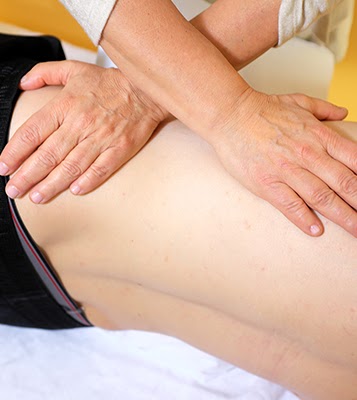Muscle fibres can go into a micro-cramp (contract and won’t relax) when we injure or challenge our bodies. This spasm reduces blood supply to the local area, causing loss of oxygen and nutrients and building up metabolic waste. Over time it may form palpable ‘knots’ that can cause a lot of discomfort, restriction and (referral) pain.
When the muscle contraction is not released, the nodule can turn into a trigger point right there in the muscle or fascia, whereas the pain may be felt (referred to) elsewhere in the body. This has to do with fascia lines that run throughout the body and the fact that fascia connects everything with everything within the body. More about fascia in a bit.
WHAT CAN INJURE OR CHALLENGE OUR BODIES?
• Repetitive movements
• Bad posture
• Under or overuse of muscles
• Dehydration
• Poor circulation (lack of movement)
• Disrupted sleep patterns
• Poor nutrition, vitamin, and mineral deficiencies
• Stress, anxiety, and depression
• Trauma
The longer the impairment goes untreated, the more fascia (connective tissue) is laid down, creating even more restriction and thickening of the tissue, resulting in a more permanent and challenging state.
WHAT IS FASCIA?
All of the body’s structures are surrounded, protected and supported by connective tissue (fascia). This spiderweb-like network also connects and binds together the organs and systems, simultaneously compartmentalising them. The densely woven fascia literally covers and penetrates every bone, muscle, nerve, artery, vein, and cell, including all our internal organs, the heart, lungs, brain, and spinal cord.
Healthy fascia is smooth, slippery, and flexible. It’s designed to stretch and realign as you move, making new linkages all the time.
The ground substance of fascia can be influenced by applying energy (heat/mechanical pressure), changing it from a denser gel state (a thicker, more gelatinous fluid) to a more fluid sol state (a relatively thin, watery fluid.) This characteristic is called thixotropy. The movement required to allow this change to happen must be slow, as the fascia will remain solid when quick or forceful pressure is applied. With a slow movement, the fascia will melt, and structures and restrictions will be released.
HOW TO KEEP FASCIA HEALTHY?
Be active and move throughout the day. If you have a desk job, take at least a two-minute break every hour. Stand up, stretch, get a cup of (herbal) tea, and move around to keep the fascia supple.
Check your posture: slouching over a desktop, laptop or phone or just sitting and walking awkwardly will not help. Knowing how you are compensating for your injured or painful body part and adjusting it will help the healing process. Adopt and maintain a good posture every time you think about it.
Get some help: Besides self-help strategies like yoga, heat pads, and foam rolling, a Fascial Release Therapist will be able to reduce fascial restriction, freeing up the underlying structures and restoring function.
WHAT’S MYOFASCIAL RELEASE TECHNIQUE (MFR)?
Myofascial Release is a hands-on (no oil) soft tissue technique that facilitates the separation of layers of fascia to stretch and reorganise the restricted fascia and restore the tissue’s elasticity, conductivity, and hydration.
An MFR practitioner will apply touch with focused attention to tight tissue and restricted areas, stimulating fascial release through heat and pressure. Applying pressure changes the fascia from a denser gel state to a more fluid and soluble state making it more elastic and flexible. This softening decreases the compression of other surrounding structures, allowing them to reorganise and align. This isn’t just a local realignment; stretching of the fascia from any part or angle will affect the entire structure. MFR is helping the body find its way back to balance, recovery, and health.
During the treatment, various techniques will be combined, including cross-hand stretches, focused local stretches, skin rolling, C-stretches, fascial glide, deep 3-dimensional stretches, the use of ‘position of ease’, pulls, rocking, and treating trigger points.
The overall intention of MFR is to release the tissue, resolve structural dysfunction, restore function and mobility, and reduce pain,
But it does more than that:
• It overrides pain messages and helps to form new pathways
• It can release emotions stored in the body because of stress, trauma, and injury.
• It triggers the parasympathetic nervous system (rest and digest)
• It enhances the anti-inflammatory response.
WHAT ARE THE BENEFITS OF KEEPING FASCIA HEALTHY?
MFR can help with the recovery from all types of physical injuries and many other conditions:
• Stress, anxiety, and depression
• Immune system dysfunctions (Fibromyalgia, CFS, IBS and others)
• A range of pain and fatigue conditions
• Myofascial Pain Syndrome
• Head, neck and back pain
• Jaw problems (TMD)
• Whiplash
• Sports injuries
• Scar tissue
• Carpal tunnel syndrome (RSI)
• Plantar fasciitis
• Stress-related muscular tension
Myofascial Release can be performed directly on the skin of any body part, including the jaw, feet, back and shoulders. Research has shown it takes up to 3 to 5 minutes of this technique per local area to establish lasting results.
Treating the fascia often requires more than one treatment. The fascia layers have built up over time, sometimes for years. Results can, however, often be felt after 1-3 treatments. It will also depend on other lifestyle factors and how well you look after yourself. A nutritious diet, healthy weight, sufficient sleep, a positive mindset, and good stress-release strategies will complement your recovery. MFR is always safe and has proven to be very effective.
It’s always important to speak to your GP to rule out any serious health condition before seeing a fascial release therapist.












